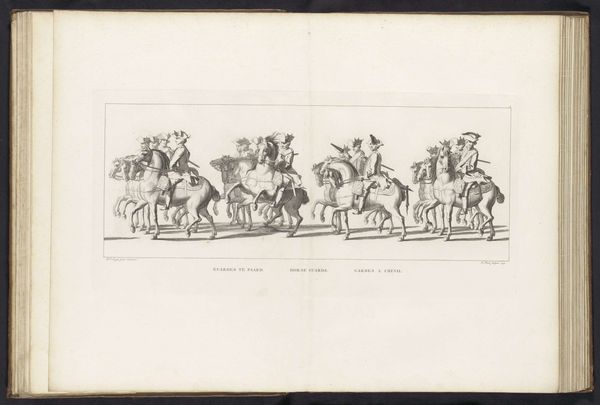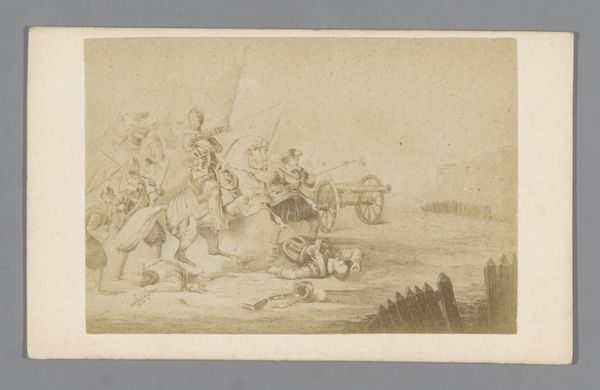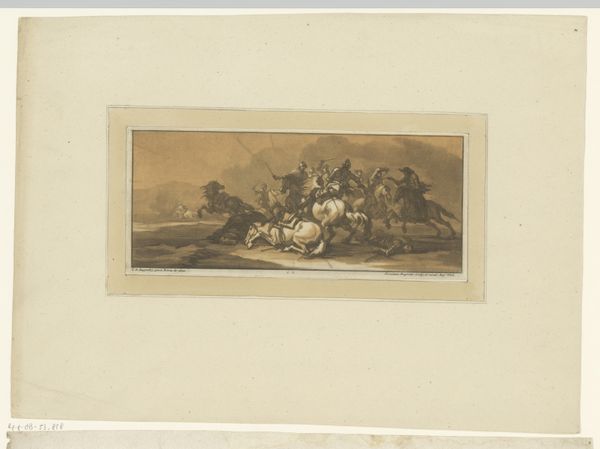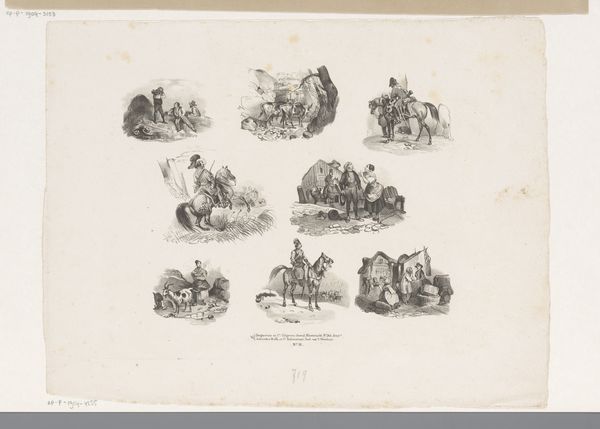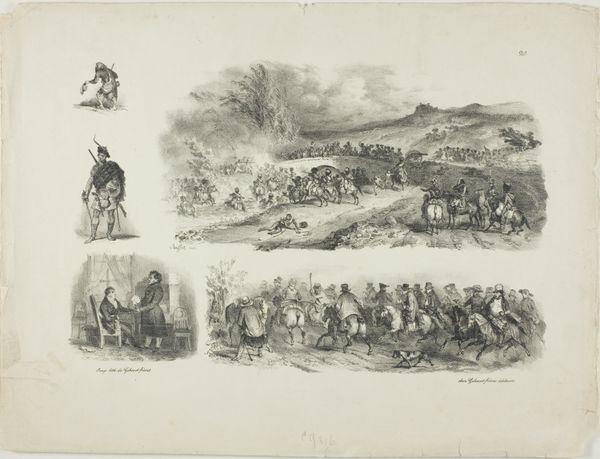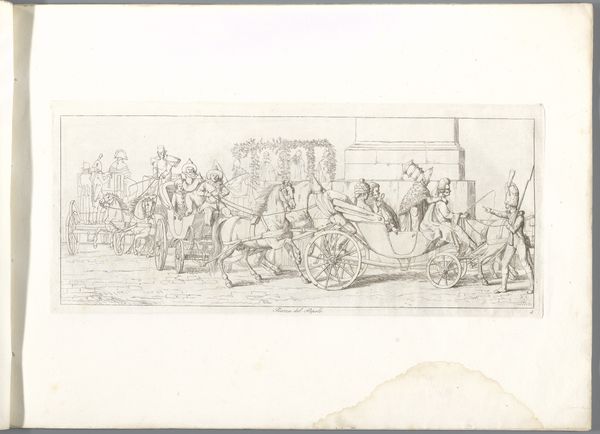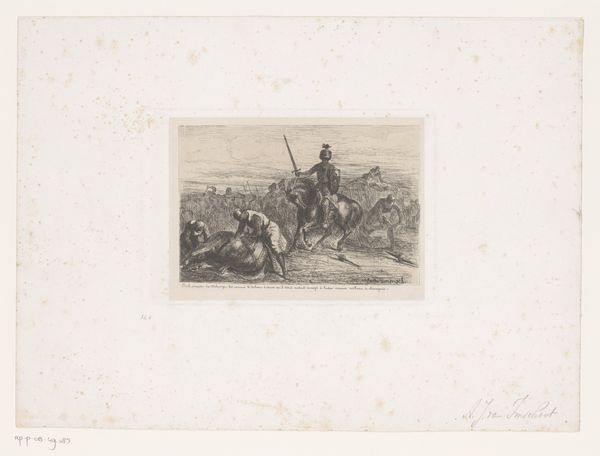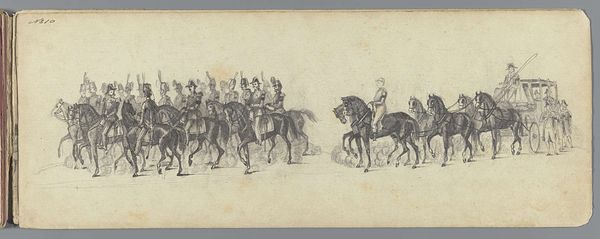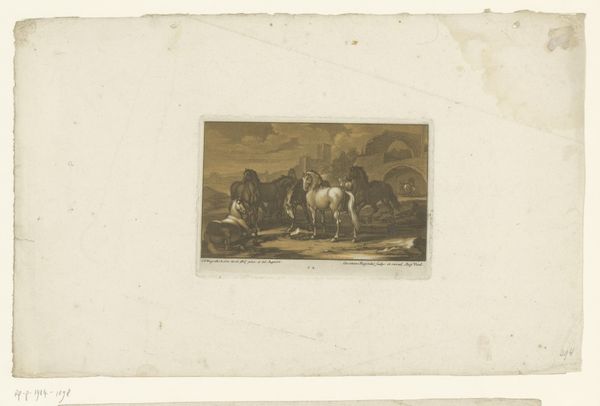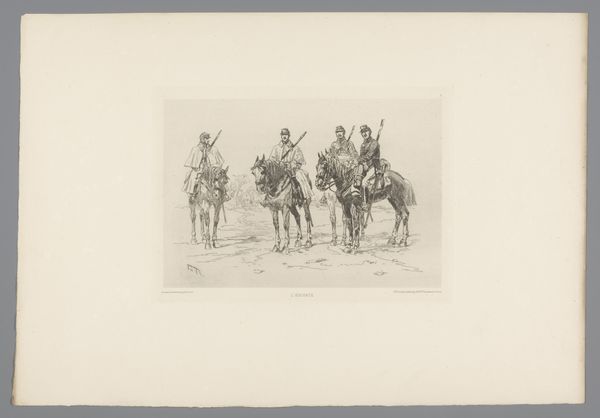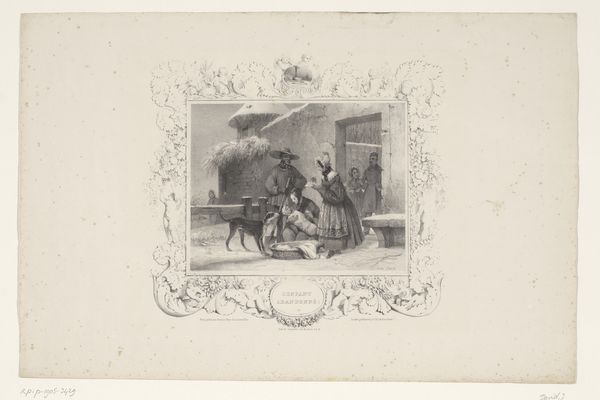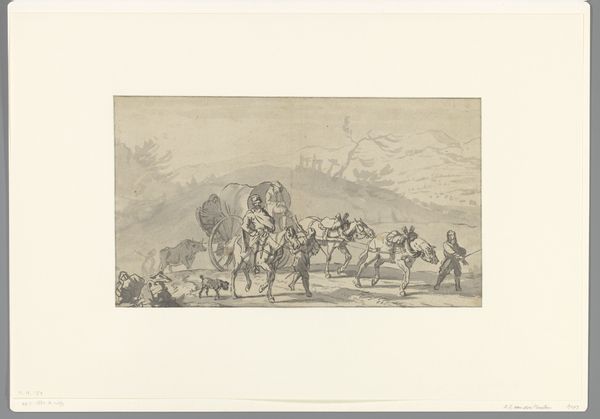
Fotoreproductie van een tekening van het Alexandermozaïek uit het Huis van de Faun in Pompeï c. 1860 - 1880
0:00
0:00
print, photography, gelatin-silver-print
# print
#
greek-and-roman-art
#
landscape
#
photography
#
gelatin-silver-print
#
history-painting
Dimensions: height 85 mm, width 176 mm
Copyright: Rijks Museum: Open Domain
Editor: So, this is a photograph, a gelatin-silver print, by Giorgio Sommer, dating back to sometime between 1860 and 1880. It’s actually a photo-reproduction of a drawing of the Alexander Mosaic from the House of the Faun in Pompeii. The scene looks really chaotic, lots of figures in the midst of battle... What strikes you most about this piece? Curator: What's most compelling is the intersection of technologies and labor here. We're seeing a photograph—a relatively new industrial process at the time—used to reproduce a drawing of a mosaic, an ancient, highly skilled craft form. Consider the labor involved: from the quarrying of stone for the original mosaic to the photographer’s darkroom manipulations and the distribution of the print itself. Do you think this photographic reproduction democratized the image of the mosaic for a wider audience? Editor: That's an interesting point. It's like a copy of a copy, making it accessible, but perhaps also diminishing the aura of the original mosaic? So, it makes the artwork widely available through a process. Does the mass production of photographs change our concept of the uniqueness of artwork? Curator: Exactly. It forces us to question the very definition of art in an age of mechanical reproduction. Think about the social context: the rise of photography coinciding with increased tourism to archaeological sites like Pompeii. This print served both as a souvenir and as a tool for disseminating knowledge, intertwined with the growing culture of consumerism. What does it say about value and the nature of historical knowledge at the time? Editor: That’s true. I never thought of it in terms of material culture and broader consumption! It's fascinating how the materials and their reproduction open up so many avenues for interpretation. Curator: Precisely. It's a window into the changing nature of art, labor, and access in the 19th century. Editor: Definitely! I'll be paying much closer attention to the production and cultural value of photographs moving forward.
Comments
No comments
Be the first to comment and join the conversation on the ultimate creative platform.
